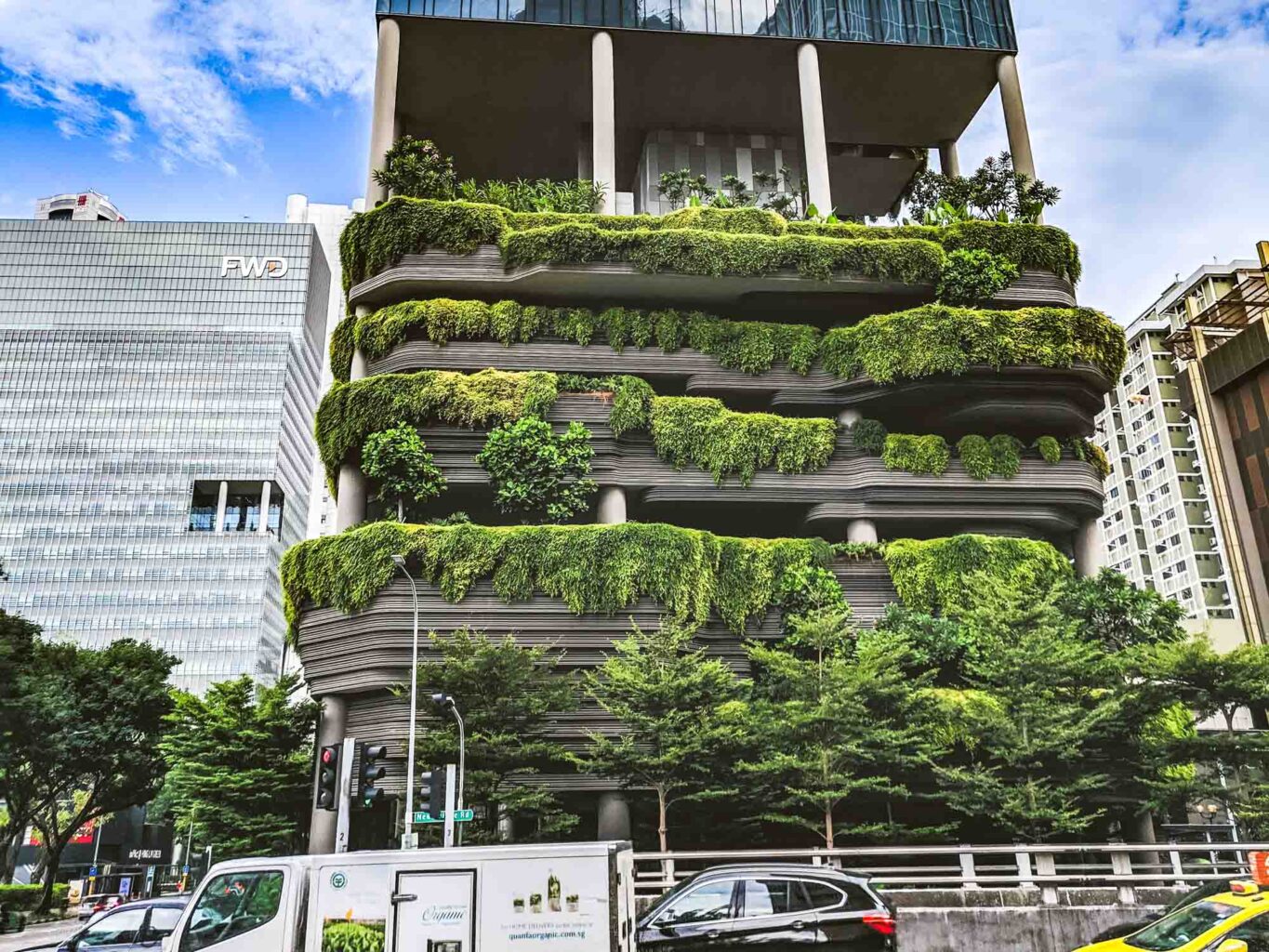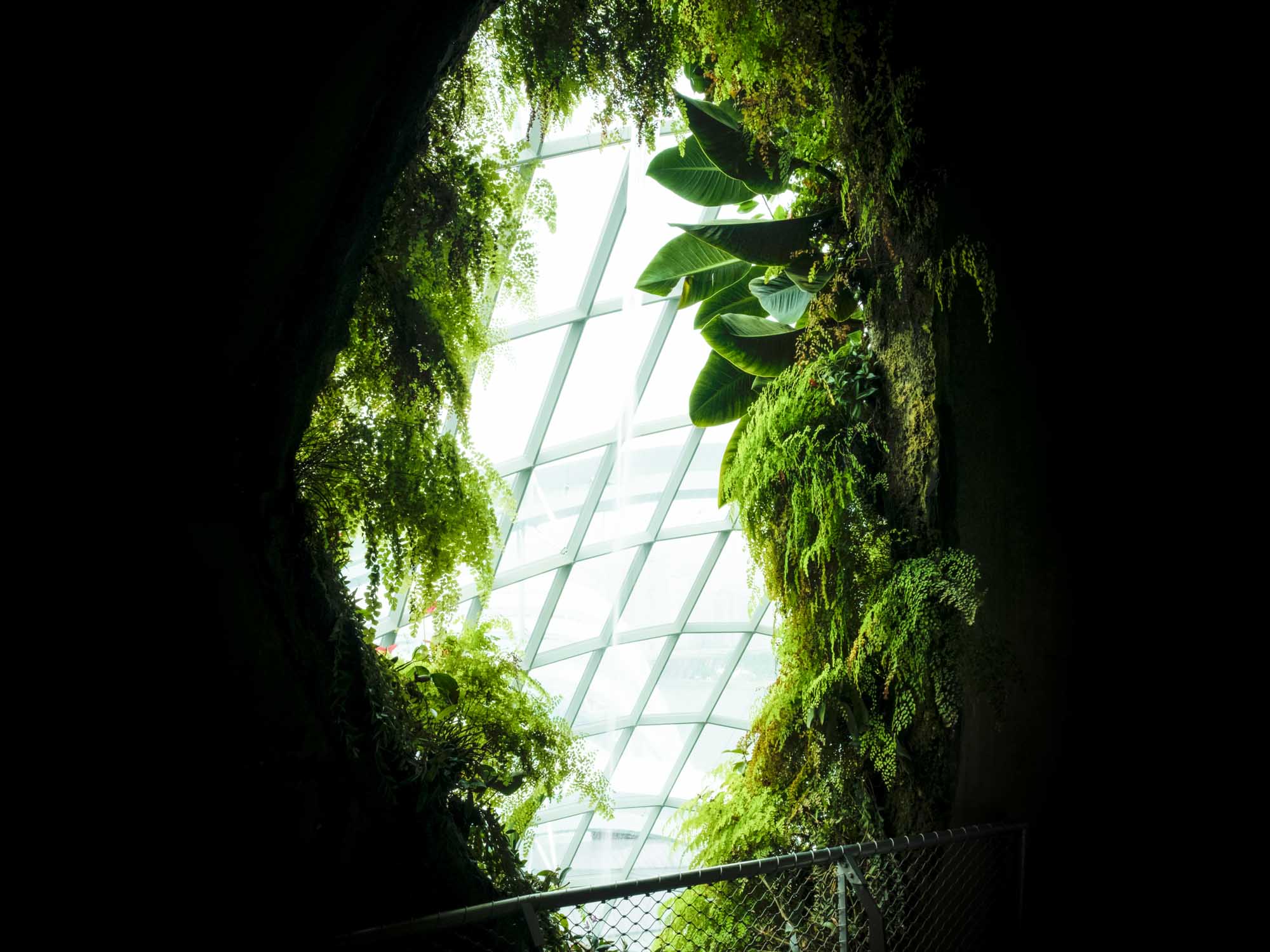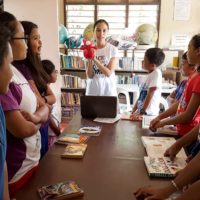Singapore has the reputation of being a ‹green city› compared to many other cities in the region. From a Garden City in the earlier years, Singapore shifted into being a ‹City in a Garden›, and is transforming itself yet again as a ‹City in Nature›. In many aspects, functions and ways, Singapore is a good example for countries in Southeast Asia and beyond.
However, this ‹green› is not sustainable — it will not stand the test of our time. Why? Because this green is superficial, fragmented and borrowed from all over the world. This green is kept green by a lot of non-green inputs. Many plants (the ‹flora›) in both public and private spaces are kept going by constant application of fertilizers and pesticides, which come from outside of Singapore. The production and use of fertilizers and pesticides require use of excessive energy and raw materials. Their application negatively impacts the biodiversity of the country. The same applies for the fauna — many animals that occur naturally in tropical climatic conditions are eliminated by continuous chemical care. Humans’ choices and actions have resulted in ever diminishing quantity and quality of fauna and flora, both above ground and in the soil. Living soil is the basis of all the life above ground. The health, biodiversity, stability and status of soil is reflected by the health of people living in the area. There is a direct connection between the microbial life of the soil and that of the microbiome of the human being.
And then, there is this aspect that the ‹green of Singapore› stretches far beyond the country, too, as far as Australia, Europe and the United States. While in the ordinary consciousness of the Singaporeans, food comes from the supermarket, the local market or the restaurant kitchen, actually some 90% of all food products sold or eaten in Singapore come from outside the city-state. While some come from near-by countries like Malaysia, Thailand and Indonesia, many come from much farther away. What appears to be a ‹green› product in the organic health food store, may not be green at all when we look at the entire environmental and social effects of such food acquisition. The food consumed in this country and the lifestyles of millions supported here have direct effects on the atmospheric carbonization, the loss of biodiversity and the quality and quantity of farmable land. They also have direct effects on social, ecological and cultural justice in other countries. While Singapore is an independent city nation, it must begin to recognize its deep reliance and dependence on, and responsibility for, the rural spaces outside its country.
In this article, I would like to offer a few broad strokes on how Singapore could go beyond to become a true example of sustainability, and even regeneration. By regeneration I mean to leave every place better by being more diverse, more enriched, with full possibilities of striving towards its potential, and being more in balance.
Nothing less than the survival of the city-state, and the Earth at large, is at stake through the approach to food systems and to green in general. Decades ago, Singapore embarked on a radical ‹blue› idea — to revive polluted waterways and collect rainwater to boost local drinking water supply. This push created the opportunity for polluted rivers and seas to be cleaned, and very importantly, give its people the chance to be in touch with the water and through exposure and play, experience how precious, beautiful and important water is. An ongoing program launched in the early 2000s is the Active, Beautiful, Clean (ABC) Waters program. The ABC program demonstrates how Singapore incorporates sustainable city planning with stormwater management, with a goal of creating community green and recreational spaces around reservoirs and canals.
In addition to the ‹blue›, I propose that Singapore looks at implementing a ‹green› green: a regeneration of our shared earth and our food systems. In my work in Singapore since 2009, I have increasingly encountered initiative-takers from government agencies to individual people who are already looking at one or the other aspect of such a green approach, like neighborhood gardening or compost-making. I myself would like to complement these activities and projects with a ‹big picture› perspective in which these initiative-takers will hopefully find themselves and on the basis of which many other necessary initiatives and measures can be started. I call this big picture the Singapore Food and Land Individuality (or SIFLI for short).

In the ABC program, the perspective of land developers was first brought to the ‹big picture› water movement over the whole of Singapore. From there, guidelines for the implementation of individual small projects (like wastewater treatment in a single block or restoration of a drainage channel) could be found. In designing a small project, developers consider the whole — how water is collected, managed and let go within the Singapore’s entire land area and water catchments; and how to do so with the best achievable quality.
Similarly, the SIFLI approach is to consider the whole — in designing a new garden or development or considering how to treat one’s plants on the balcony, decision-makers take into account the entire land area of Singapore. As far as food is concerned, considerations include the places where the food products are sourced, with questions asked about what needs to be transformed in order to make food and city living regenerative.
While every country should ideally contribute to the regeneration of the Earth, I believe that Singapore, with its wealth of educated people as well as financial wealth, has a greater than average duty to contribute to regeneration and transformation of agriculture and food systems.
The proposed change of perspective regarding the lands is to see life in the city nation as a whole. That is, Singapore is one unique, living, breathing organism. In this context, the individual compost heaps, neighborhood gardens, farms, balconies, parks and waterscapes are seen as organs of this organism. And as this organism is a unique living being, it is an individuality: the Singapore Food and Land Individuality (SIFLI). As an individuality, instead of ‹it›, I am inclined to call SIFLI a she.
She consists of the mineral basis of all lands, all water, the flora, the fauna and the humans, who, consciously or not, shape the state of this being and her appearance through their daily food, waste and transport choices, as well as their habits and ways of living. As far as the material flow (like food, raw materials, fertilizers) is concerned, the geographic range of SIFLI stretches more or less out over the entire planet. As Singapore shifts towards a mindset of regenerating land and Earth in general, over time, SIFLI becomes one with a much reduced geographic range, covering only the Singapore land mass and that of neighboring countries.
The terms ‹Agricultural Organism› and ‹Agricultural Individuality› originate from the Biodynamic Farming Approach (BD for short). BD was initiated 100 years ago in Germany as a direct answer to the declining quality of food that resulted from large-scale application of synthetic nitrogen fertilizers made in factories that were making explosives during World War I. Several decades of scientific research demonstrate note-worthy qualities of BD compared to other farming systems in categories like food quality, biodiversity, system stability, integration of social aspects and more.

I advocate that the BD approach is applied as much as possible in SIFLI, as this way the best results can be expected. Mainstream approaches to land management contributed to critical global problems like climate change, biodiversity loss, water pollution and loss of fertile soil. BD provide tangible solutions of building humus, sequestering carbon in soil, regenerating soil and freshwater systems, and increasing below- and above-ground biodiversity. Good examples of these are Darjeeling Organic Tea Estates or Sekem or Living Farms.
What if Singapore became the first biodynamic city in the world?
Aside from looking at Singapore as a living, breathing organism and as an individuality, I would like to stress what indigenous communities and BD have hinted at for a long time: modern science and society and their destructive and disastrous outcomes are based on the notion of ‹us versus them›, objectivism instead of holism, subject and object, where humans are seen as separate — and even opposed — to nature.
Regenerative land practices and serious restoration of life are only possible if we can transform this old world view and recognize that humans are part of something bigger: the earth does not belong to humans, but rather we belong to the earth.
With this I would like to delve into three aspects of SIFLI.
A) Food Production and Land Use in Singapore
As stated above, very little of the food eaten in Singapore is produced on-site these days. Considering the input of raw materials and energy, it will never be able to produce all the foods needed on its territory. However, for several reasons, it is very well worth discovering the potentials of food production in Singapore. One aspect to focus on is the ever-growing need of education regarding anything that concerns food. Smart education cannot rely on theory, information and data alone – in the best case it is based on hands-on experience. This would be reason enough to integrate the creation and care of edible gardens in schools and neighborhoods, food farming areas with animals, as well as learning networks that are connected by a shared vision with vibrant exchanges in circulating materials and know-how.



Images: Chef LG Han visits local farms in Singapore. Photo: Screenshot of a Video produced by the Singapore Food Agency
Landscapes properly managed with BD methods can help to enhance local biodiversity, which not only includes the introduction of new plants but supporting naturally occurring flora and fauna. Examples around the world have also shown that application of BD methods can encourage harmonious social communities. People’s perception and attitude to food may be expected to change over time.
All these can result in much bigger potential for food production in Singapore, and we are talking about food with the best available quality. Transforming the city-state from a Garden City into a true City in Nature using the SIFLI approach will create greater biodiversity at all levels of life – production of better and greater quantity of food and vibrant spaces for community bonding and active recreation.
B) Food Production and Land Use outside Singapore
It is a tremendous task to figure out the carbon footprint of all food available for purchase and consumption in Singapore. Few people in Singapore know or consider how far their food travelled and the adverse impact global food production and transportation causes. New methods, such as True Cost Accounting, provide ideas for how expensive such food actually is. These methods include in the equation costs left to be paid by future generations or by the communities that produce food for people in faraway land. With this aspect of the SIFLI, I am looking to a) create awareness and b) transform the relationships between food consumers, food producers and food suppliers. To give a few visionary examples: individuals, groups and enterprises in Singapore would grow in appreciation and support for BD, organic and permaculture food farms that are located in Singapore and adjoining countries. Farmer markets in Singapore would establish themselves with food products coming from within the country or within a limited region. People in Singapore would consume more food made with locally-sourced plants (example, cassava) and wean dependence on wheat and other temperate products that are sourced from further away.
C) Fake Foods versus Real Foods
In Singapore, and many other cities, entire communities and a whole generation of environment-conscious and ethics-based eaters are being introduced to lab-grown ‹food› as an environmentally friendlier food alternative. Many food consumers are enticed by taste, appearance, and novelty. Unknown to many, companies that produce these ‹food alternatives› are the same people and companies that caused the global degradation of soil and biodiversity and the worsening qualities of food. Similarly not well known is that these lab-grown ‹food› alternatives require raw materials coming from places that practice GMO monocultures, and the ‹food› alternatives are stuffed with loads of artificial additives that nobody wants to have in their bodies.
For the SIFLI to become a healthy, just and lively being, we need regenerative approaches that are based on whole systems thinking. SIFLI cannot support practices that cause harm to Earth. Neither can it support lab-grown interventions that are advertised as ‹food›. Both systems prioritise profits for a few companies or individuals, and do not take into account people’s or nature’s well-being. As I write this article, I am aware that this text produces more questions than answers. This article is intended to give you a big picture perspective.
The author would like to thank Chingwei Chen, Huying Ng, Grace Zozobrado-Hahn and Cuifen Pui for commenting on the draft of this article.





